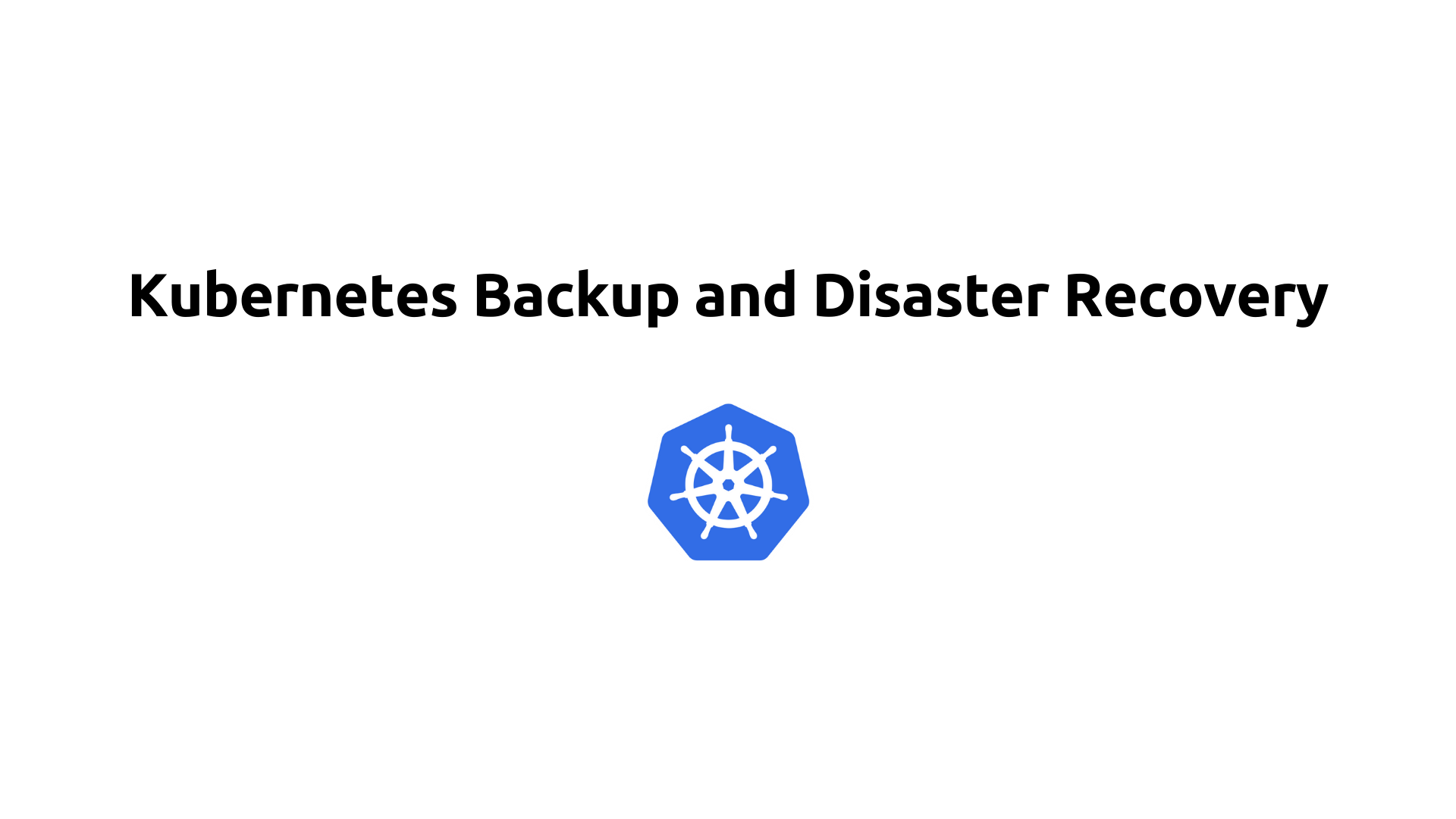Kubernetes: Backup and Disaster Recovery
 Saurabh Adhau
Saurabh Adhau
Introduction
In the fast-paced world of Kubernetes deployments, ensuring data protection and application continuity is paramount. This article explores the essential concepts and practical steps for implementing robust backup and disaster recovery (DR) strategies using tools like Velero.
Learning Objective
The primary goal is to understand how to safeguard Kubernetes clusters and applications against failures or disasters by employing reliable backup and disaster recovery mechanisms.
Scenario
Imagine managing a Kubernetes environment where continuous uptime and data integrity are critical. To mitigate risks from hardware failures, human errors, or unforeseen disasters, implementing effective backup and disaster recovery strategies becomes imperative.
Explanation
Backup
Regularly saving copies of Kubernetes resources and persistent volumes is essential to prevent data loss. Backups serve as a safety net against accidental deletions, corruption, or system failures.
Disaster Recovery
Disaster recovery involves strategies and tools to restore data and applications swiftly to a functional state after a disaster strikes. This ensures minimal downtime and uninterrupted service delivery.
Velero Installation
Velero, an open-source tool, simplifies backup, recovery, and migration of Kubernetes cluster resources and persistent volumes. Let's walk through the installation process:
Install Velero CLI
First, download and install the Velero CLI on your management machine or Kubernetes master node:
wget https://github.com/vmware-tanzu/velero/releases/download/v1.6.3/velero-v1.6.3-linux-amd64.tar.gz
tar -xvf velero-v1.6.3-linux-amd64.tar.gz
sudo mv velero-v1.6.3-linux-amd64/velero /usr/local/bin/
Deploy Velero
Deploy Velero into your Kubernetes cluster, configuring it to use an S3-compatible storage service for backups. Replace placeholders with your actual S3 bucket details:
velero install \
--provider aws \
--plugins velero/velero-plugin-for-aws:v1.2.0 \
--bucket <YOUR_BUCKET_NAME> \
--secret-file ./credentials-velero \
--backup-location-config region=<YOUR_REGION>,s3ForcePathStyle="true",s3Url=<YOUR_S3_URL>
Backup and Restore Operations
Once Velero is set up, you can perform essential backup and restore operations using its CLI:
Create a Backup
Initiate a backup of Kubernetes resources, specifying the namespaces to include:
velero backup create my-backup --include-namespaces default
Verify Backup
Check the details of a specific backup to ensure it is completed successfully:
velero backup describe my-backup --details
Restore from Backup
Deploy resources and persistent volumes from a backup to restore your cluster's state:
velero restore create --from-backup my-backup
Steps to Implement Backup and Disaster Recovery
Install Velero CLI: Download and install the Velero CLI for managing backups and restores.
Deploy Velero: Configure and deploy Velero into your Kubernetes cluster with appropriate storage configurations.
Create a Backup: Initiate backups of Kubernetes resources and persistent volumes using Velero.
Verify the Backup: Confirm the success and details of created backups to ensure data integrity.
Restore from Backup: Utilize Velero to restore applications and data swiftly in case of failures or disasters.
Detailed Example Explanation
Velero:
Velero facilitates reliable backup and recovery of Kubernetes resources and persistent volumes across various cloud providers.
Backup:
Regular backups ensure data availability and protection against unexpected data loss scenarios.
Restore:
Quick restoration from backups minimizes downtime and ensures the continuity of critical services.
Benefits for Enterprise Applications
Data Protection: Ensures data integrity and availability through scheduled backups and efficient recovery mechanisms.
Application Continuity: Maintains seamless operations by swiftly recovering from disruptions or failures.
Compliance: Meets regulatory requirements for data retention and disaster recovery capabilities.
Additional Concepts and Examples
Scheduled Backups
Automate backups at regular intervals to ensure continuous data protection:
velero create schedule my-daily-backup --schedule="0 2 * * *" --include-namespaces default
Backup with Custom Labels
Add custom labels to backups for better organization and management:
velero backup create my-backup --include-namespaces default --labels purpose=testing,env=dev
Hands-on Activity
Install Velero CLI: Download and set up the Velero CLI as per the provided instructions.
Deploy Velero: Configure and deploy Velero into your Kubernetes cluster using the deployment script.
Create a Backup: Initiate a backup to protect Kubernetes resources and persistent volumes.
Verify and Inspect: Use Velero commands to verify backups and inspect restore operations for confidence in data recovery capabilities.
Conclusion
Mastering backup and disaster recovery in Kubernetes with tools like Velero empowers organizations to safeguard critical data, uphold service availability, and adhere to stringent compliance requirements. By following best practices and leveraging automation, teams can effectively mitigate risks and ensure business continuity in dynamic cloud-native environments.
Subscribe to my newsletter
Read articles from Saurabh Adhau directly inside your inbox. Subscribe to the newsletter, and don't miss out.
Written by

Saurabh Adhau
Saurabh Adhau
As a DevOps Engineer, I thrive in the cloud and command a vast arsenal of tools and technologies: ☁️ AWS and Azure Cloud: Where the sky is the limit, I ensure applications soar. 🔨 DevOps Toolbelt: Git, GitHub, GitLab – I master them all for smooth development workflows. 🧱 Infrastructure as Code: Terraform and Ansible sculpt infrastructure like a masterpiece. 🐳 Containerization: With Docker, I package applications for effortless deployment. 🚀 Orchestration: Kubernetes conducts my application symphonies. 🌐 Web Servers: Nginx and Apache, my trusted gatekeepers of the web.